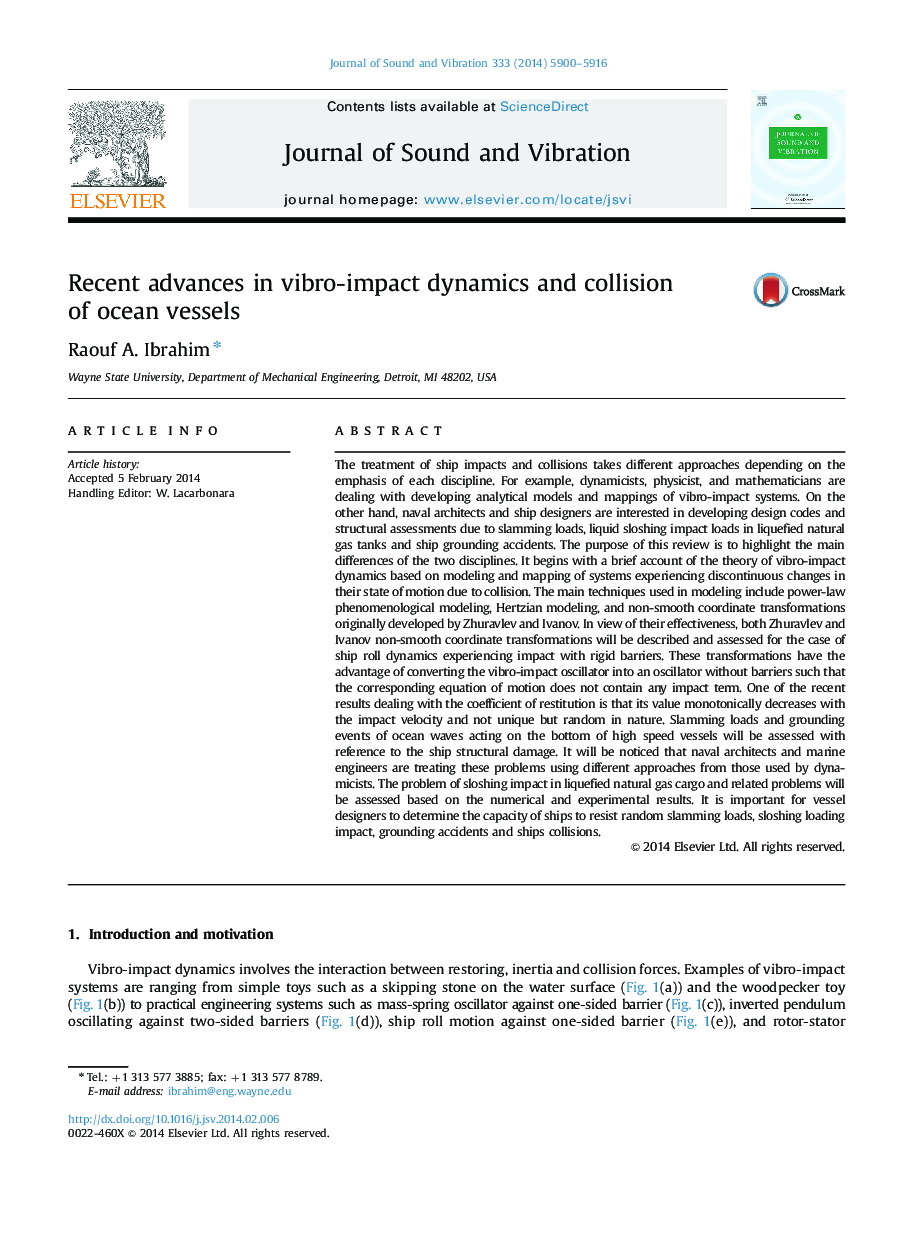| کد مقاله | کد نشریه | سال انتشار | مقاله انگلیسی | نسخه تمام متن |
|---|---|---|---|---|
| 287859 | 509591 | 2014 | 17 صفحه PDF | دانلود رایگان |
The treatment of ship impacts and collisions takes different approaches depending on the emphasis of each discipline. For example, dynamicists, physicist, and mathematicians are dealing with developing analytical models and mappings of vibro-impact systems. On the other hand, naval architects and ship designers are interested in developing design codes and structural assessments due to slamming loads, liquid sloshing impact loads in liquefied natural gas tanks and ship grounding accidents. The purpose of this review is to highlight the main differences of the two disciplines. It begins with a brief account of the theory of vibro-impact dynamics based on modeling and mapping of systems experiencing discontinuous changes in their state of motion due to collision. The main techniques used in modeling include power-law phenomenological modeling, Hertzian modeling, and non-smooth coordinate transformations originally developed by Zhuravlev and Ivanov. In view of their effectiveness, both Zhuravlev and Ivanov non-smooth coordinate transformations will be described and assessed for the case of ship roll dynamics experiencing impact with rigid barriers. These transformations have the advantage of converting the vibro-impact oscillator into an oscillator without barriers such that the corresponding equation of motion does not contain any impact term. One of the recent results dealing with the coefficient of restitution is that its value monotonically decreases with the impact velocity and not unique but random in nature. Slamming loads and grounding events of ocean waves acting on the bottom of high speed vessels will be assessed with reference to the ship structural damage. It will be noticed that naval architects and marine engineers are treating these problems using different approaches from those used by dynamicists. The problem of sloshing impact in liquefied natural gas cargo and related problems will be assessed based on the numerical and experimental results. It is important for vessel designers to determine the capacity of ships to resist random slamming loads, sloshing loading impact, grounding accidents and ships collisions.
Journal: Journal of Sound and Vibration - Volume 333, Issue 23, 24 November 2014, Pages 5900–5916
